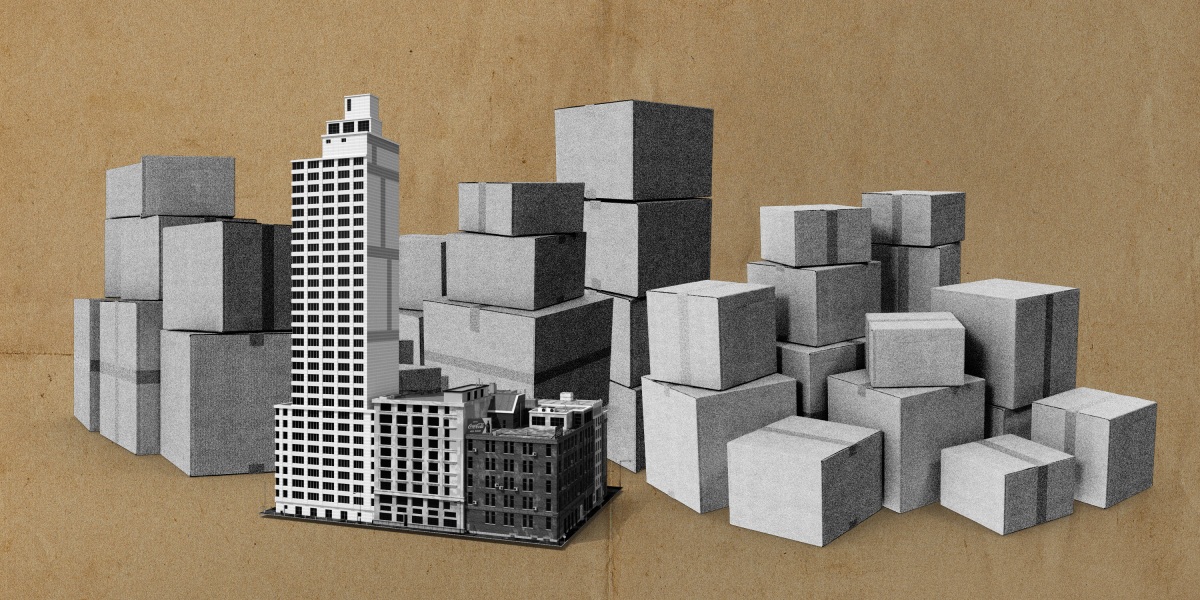
Noticing the increase in e-commerce delivery traffic, then-mayor Bill de Blasio allocated $38 million in the November 2021 budget to shipping these packages via the “blue highway”––by ferry instead of by truck. “One of the best ways to fight climate change is to get away from a society and economy dominated by big trucks,” he said in late 2021. “[A]nd that’s just the truth in New York City and America today: the reign of the 18-wheeler. It’s supreme; it’s everywhere, and it’s a danger to our future.”
Other attempts to reduce delivery-truck congestion have popped up. There are cargo bikes, for example, and a potential $3 surcharge on every “nonessential” package delivered. Lockers are also a key player; they help tackle the “last mile” problem—or the last leg of the delivery process—by centralizing drop-off locations to save the door-to-door toil. Amazon-exclusive lockers live in 7-Elevens, Rite-Aids, Whole Foods markets, and Chase Banks. Retailer-agnostic locker services, such as Stowfly, also exist. The company’s lockers can be found at a range of locations including smaller mom-and-pop stores. Stowfly CEO Sid Khattri says the approach solves two problems at once: centralizing e-commerce delivery while helping local businesses “make extra income and get foot traffic at a time when physical retail is dying.”
It’s helpful to step back and put the parcel problem in historical context, says David Vega-Barachowitz, an associate at WXY, an architecture firm in New York City. The city’s package problem is not just about congested streets or inefficient distribution of resources, he says. Rather, it’s another crisis of convenience, akin to when, in the 1950s, suburban shopping centers began competing with city downtowns. “We live in a city whose main pitch is the ability to walk out your door, get a carton of milk, go to a bookstore, go to a movie, etc.,” he says, “and convenience culture is threatening all of that.”
Arthur Getman, director of analytics at the New York City Department of Transportation, agrees. “A lot of people coming to New York bring the mentality of the ‘American Dream,’” he says, but here’s the problem: that dream is largely based in suburbia. The city just doesn’t have the space for that—for everyone to have their house, their lawn, their car, and their stuff. With its public transportation, bike lanes, sidewalks, parks, and apartment buildings, New York City is made to share.
As everyone from city planners to apartment building managers copes with the rise of e-commerce, Holguín-Veras, after poring over the data for years, can’t help but ask: “Of all the purchases made, what percent of those are truly urgent?”
Sarah Simon is a freelance multimedia journalist based in New York City.
